#44 in Vietnam
Popular Gỏi Variations
Gỏi: Ingredients and Preparation
Main Ingredients
Main Cooking Method
Preparation Process
Gỏi: A Deep Dive
Cultural Significance
Taste
Texture
Aroma
Color
Serving Style
Serving Temperature
Accompaniment
- Cháo
- Bánh Phồng Tôm
Occasions
Seasons
Special Diets
Calories
Popularity
Popular Similar Dishes
- Som Tam
- Gado-gado
Popular Dining Area
Gỏi, also known as Nộm in Northern Vietnam, is a traditional Vietnamese salad that varies significantly in its ingredients and preparation across different regions of Vietnam.
Unlike Western-style salads, gỏi typically combines a mix of fresh vegetables like grated turnip, kohlrabi, cabbage, papaya, lotus root, banana blossom, water spinach, and slices of cucumber, often accompanied by a variety of meats such as pork, beef, shrimp, or fish. Sometimes, unripe mango is also used.
The salad is distinctively flavored with a combination of spices, herbs, and peanuts, and is usually dressed with a mixture of lime juice or vinegar, sugar, garlic, chili pepper, and fish sauce. It is often enjoyed with cháo (rice porridge or congee) or bánh phồng tôm (Vietnamese prawn crackers).
A well-known variant is gỏi gà, which is a chicken salad. Other popular types include salads made with green papaya or dried beef, showcasing the diversity and adaptability of this Vietnamese culinary staple.
Let’s delve into understanding this dish’s features, its various forms, benefits and drawbacks, frequently asked questions, and comparable delicacies.
Key Points
Gỏi Images
What Are Different Gỏi Varieties?
Gỏi” is known for its fresh, vibrant flavors and diverse variations. Here are 12 different types of gỏi:
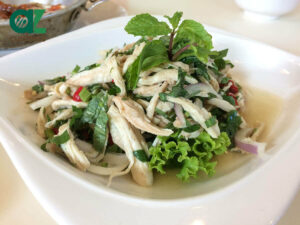
Gỏi Gà
Shredded chicken with fresh herbs, onions, lime fish sauce dressing, peanuts, and fried shallots.

Gỏi Vịt
Thinly sliced duck with fresh herbs, onions, and a spicy, tangy dressing.

Gỏi Bò
Thinly sliced beef with onions, herbs, and a sweet, sour, spicy dressing.

Gỏi Tôm Thịt
Boiled shrimp and sliced pork with fresh vegetables and herbs, light tangy sauce.
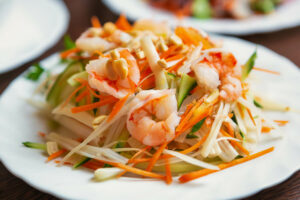
Gỏi Hải Sản
Variety of seafood like shrimp, squid, fish, with vegetables and a citrusy, spicy dressing.

Gỏi Cá
Thinly sliced or shredded fish with herbs and a tangy, sometimes spicy dressing.

Gỏi Bắp Chuối
Thinly sliced banana blossom with fresh herbs, tangy, sweet, spicy dressing, topped with crushed peanuts.

Gỏi Ngó Sen
Characterized by its use of tender lotus stems, a mix of fresh herbs, and often includes shrimp or pork, all tossed in a tangy dressing.
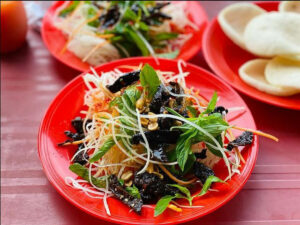
Gỏi Bò Khô
Dried beef with a spicy and sweet dressing, fresh herbs, and vegetables.

Gỏi Xoài
Unripe mangoes with herbs, onions, sweet and spicy dressing.
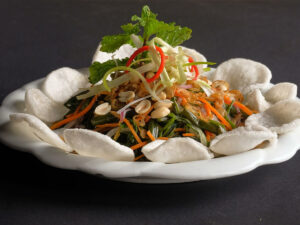
Gỏi Rau Muống
Blanched water spinach with herbs, tangy, sweet, and spicy sauce.

Gỏi Chay
Tofu, mushrooms, fresh vegetables and herbs, dressed in a light, flavorful sauce.

Gỏi Đu Đủ
Shredded green papaya mixed with herbs, chili, and beef or shrimp, often with vinegar-based dressing.
Each of these Gỏi varieties can be further enhanced with various accompaniments, adding an extra layer of texture and flavor to the dish.
What to Serve with Gỏi?
Gỏi pairs wonderfully with various dishes. Here are two excellent accompaniments to serve with it:

Cháo
This is a general term for Vietnamese rice porridge that is both comforting and versatile. It’s light enough not to overpower the fresh flavors of gỏi, yet substantial enough to make the meal more filling. Cháo gà, cháo vịt are the 2 types of Vietnamese rice porridge that are usually accompanied by gỏi in Vietnamese cuisine.

Bánh Phồng Tôm
These are Vietnamese prawn crackers, known for their crisp texture and light shrimp flavor. They add a delightful crunch and a hint of seafood taste, complementing the fresh and vibrant ingredients in gỏi.
While these accompaniments enhance the meal, it’s important to consider the pros and cons of gỏi itself.
Pros and Cons of Eating Gỏi
Gỏi is known for its fresh, vibrant flavors and diverse ingredients. Here are some pros and cons to consider:
Pros
Cons
Let’s now turn your attention to the frequently asked questions.












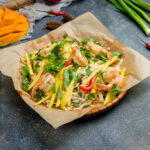



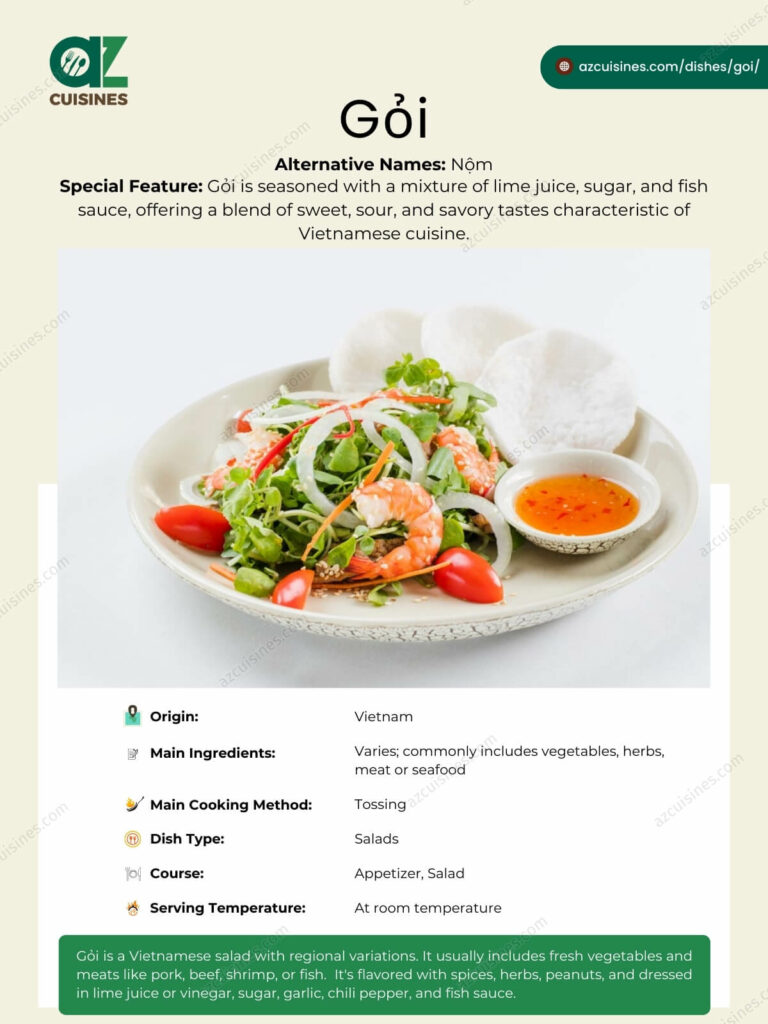


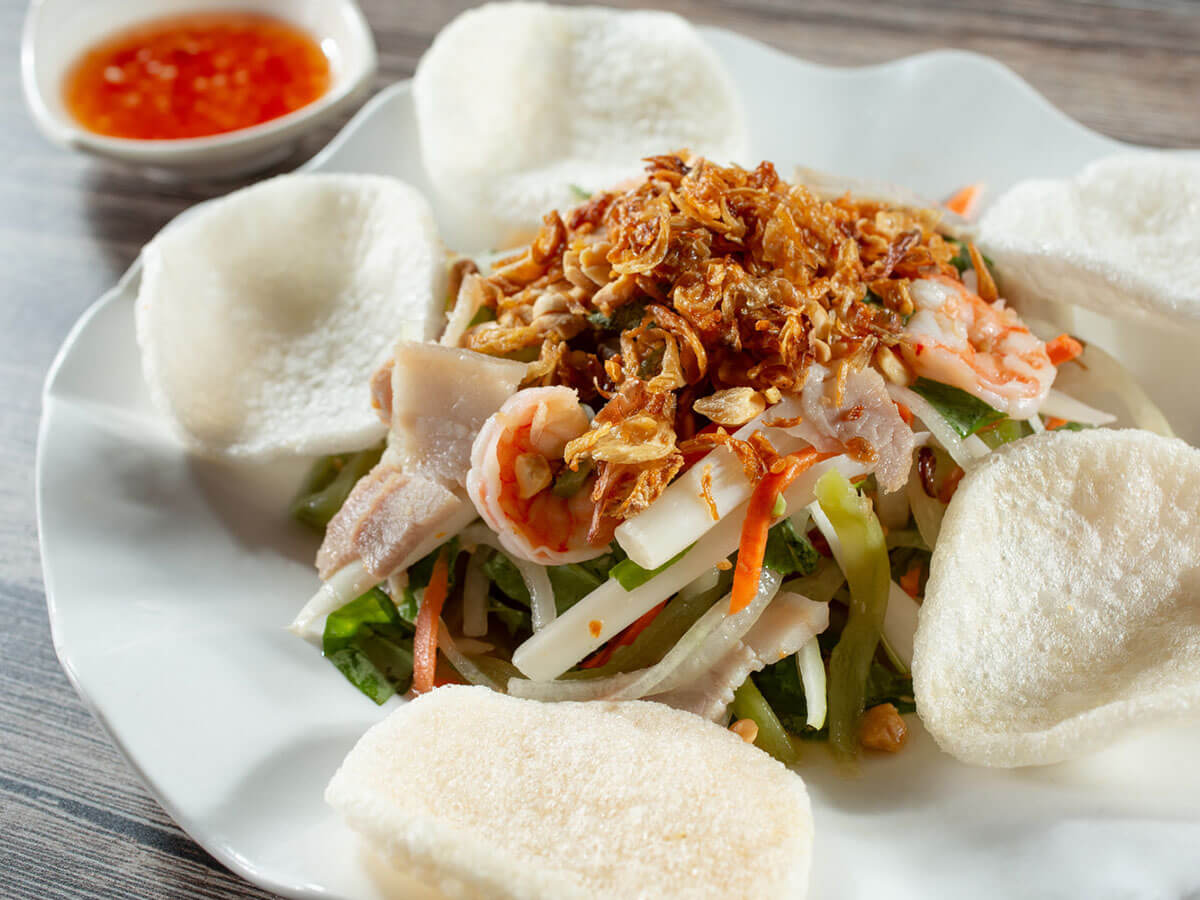



Truc Tran (Kris)
Senior Food Editor
Expertise
Home Cooking, Meal Planning, Recipe Development, Baking and Pastry, Food Editor, Cooking-video Maker, Vietnamese Food Evaluation Expert
Education
Truc Tran (Kris), an experienced food writer and editor, is great at exploring and describing global cuisines, from simple street food to fancy dining. In her writing, she skillfully mixes different flavors, cooking methods, and culinary traditions, showing the unique character of various cultures through their food and drinks. On azcuisines.com, Kris highlights her knowledge, especially in Asian cuisine and worldwide traditional dishes.